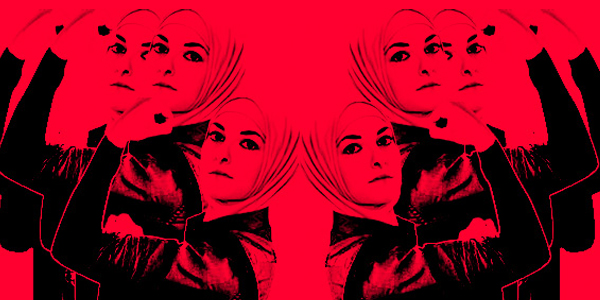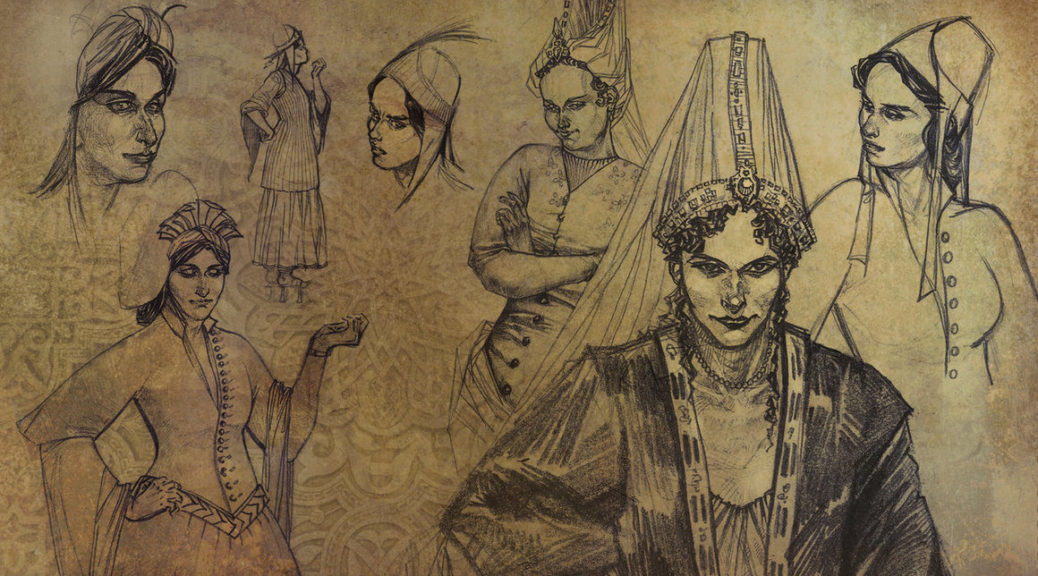Much of how Westerners consume information about Islam comes via the most unflattering and biased outlets. The media, television programs, and films have often focused on the plight of Muslim women by selecting stories that stand out due to their instances of abuse and marginalization in the communities. It is rare, however, to find a separation or distinction being made between the women in question’s religion, society, tradition, culture, and family. It is easier for the stories to focus on lumping everything that makes a person unique together into one amorphous entity–that is, Islam. Muslim women living in or interacting with those in the West have surely felt pressure to “fight the man,” both literally and figuratively, by leaving the Hijab behind and fighting Islam as though it were in and of itself the oppressive structure in which they live. The problem with this frame of understanding is that it takes away any analysis required of the structure in which these women live.
Countries with a high population of Muslims are often called “Muslim countries” and usually refer to the Middle East, Central Asia, and a smattering of countries in sub-Saharan Africa and Southeast Asia. (It is interesting to note that countries with a predominantly Christian population are not referred to as “Christian countries” by Western media). The tendency to refer to this collection of states as “Muslim” causes the reader to assume that these states are entirely controlled by the religion. This is false. Nearly all of the countries in the Middle East have a mixed system of government whose civil code incorporates European tradition with particular applications of Islamic law. Iran, Sudan and Saudi Arabia alone claim to rule their countries entirely by Islamic law, but there are differences even within their codes and application. To note, “Throughout history and throughout the Muslim world, sharia has been shaped and reshaped, influenced by local customs, reconstructed by colonial law, and more recently by national legislatures, administrators, courts and international treaties.” Just like laws around the world, the creation and interpretation of laws for society changes over time and this reflects the negotiation and renegotiation of issues in society among members of the communities.
In regards to women and their rights, this distinction is important to make because when we assume that a country is “Islamic” we are assuming that it enacts laws and policies against women because the state has the ultimate authority and wisdom to know what is right and what is wrong. However, all of these countries are led by autocratic institutions–whether they be kings, presidents, or religious leaders–who claim they and those they employ have more knowledge or say-so into interpreting women’s roles and rights in society. Below the level of government, these issues are being negotiated among Muslim women and men, much in the same manner that men and women demanded rights and changes in their societies in Europe and North America.
Topics such as needing male chaperones, driving cars, female genital mutilation (FGM), honor killings, and arranged marriages are all topics brought up when claiming Muslim women are oppressed and without agency in their own lives. It is true that in many cases these restrictions and expectations are placed upon women and horrific violence has happened against women–this cannot be denied at all, and those who carried it out must be brought to justice. The instances of these women, however, should not be assumed and applied to all Muslim women and that all of these practices are applied across Muslim countries. In many cases, these practices that are assumed to be “Islamic” are more cultural and existed in the culture even before Islam and practiced even among non-Muslims (like FGM).
In 2013, Egypt ranked as the “worst” country for women’s rights in the Arab world out of 22 countries. Egypt, like most “Muslim” countries, prides itself on its large Muslim population and its incorporation of Shari’a law into the civil code. Two of the reasons Egypt made the top of this notorious list is due to 2 particular issues. Sexual harassment and FGM is very high in Egypt, but we cannot attribute this to Islam. In fact, most of the Egyptian women who reported harassment were wearing Hijabs or Niqabs. Sexual harassment is not condoned in Islam and FGM was actually practiced prior to Islam’s institutionalization in the Arabian peninsula. It is practiced among non-Muslims in Egypt and beyond as well, as it was a traditional practice and has been condemned by Al-Azhar’s Grand Mufti.
Egyptian women are constantly negotiating changes within their society, whether it be religious or nonreligious topics. The main thing to note is that it must be negotiated by the women themselves and not imposed and enforced from outsiders looking in. People who do not live in Egypt (or any other country heavily populated by Muslims) and judge these women as powerless do not understand the complexities of these society by merely reading news articles or jumping between Quranic verses supposedly claiming this or that. As readers and supporters of women’s rights, it is important that we be available to assist if called upon, but realize that imposing anything on anyone never works. When people demand their rights or try to change things in their culture, gradually those changes happen. When has imposing anything on anyone ever worked out–long term?
Tag Archives: east
An Empire for Women: Muslim Women Under Ottoman Rule
As we continue the discussion regarding women and Islam, it would be wise to look at Muslim women in time periods beyond that of the life of the Prophet. Throughout history there have been several dynasties and kingdoms that have come and gone as civilizations do, but the Ottoman Empire sticks out as one of the largest and longest-lasting empires of all time. Indeed, the Ottoman Empire stretched from north-western Africa (modern day Algeria) all the way to the Red Sea, up into the Levant and Mesopotamia and to the top of the Balkan peninsula. The areas controlled by the Ottoman Sultans would eventually come to shape the layout of the modern Middle East as we know it today following the end of World War I. Within this large swath of land, the Ottomans ruled over various types of religious believers and ethnicities. The rules that governed the interactions among and between individuals were dictated by their religious communities and respected by the Ottoman’s laws (which were most informed by Islamic law). When we take a closer look at women living under Ottoman law at this time, what we see is a very different picture than that of women in other parts of Europe.
As with all societies, the role of men and women are constantly being negotiated and renegotiated. This was no different during Ottoman times. There is an increasing amount of research written about women in the Ottoman Empire, particularly their role in society, and how that view has been shaped primarily by Western travelers influenced by orientalism. Interestingly, however, that some Westerners have viewed women in the Ottoman times as fairly free. “This is further confirmed in the early 18th century letters of Lady Mary Wortley-Montague, in which she exclaims that nowhere else are women as free as they are in the Ottoman Empire.”
Research on Muslim women in the Ottoman Empire have revealed much. What we see are two levels of society, both defined in their own right by the power of the women in her particular sphere of influence.“Leslie Pearce argues…that women were allowed access to the public world in such instances as attending mosques for purposes of religious teachings, and that some religious leaders did approve of this type of female public appearance.” And as with most societies, Muslim women’s activities and roles varied between the upper and lower classes. For upper-class women, a sense of segregation unfortunately resulted in the Western misinterpretation of the term “harem,” which comes from the Arabic world “haram,” or forbidden. While the stereotype sees these women as powerless sexual objects, in reality, they held much influence over the wealthier men, such as the Sultan and his associates. Research even suggests that these women were the driving forces behind the development of charitable organizations and political decisions. This influence was enshrined in the position of the valide sultan (the “mother of the sultan”). Probably one of the most famous of the valide sultans was Hafsa Sultan, the mother of Suleiman the Magnificent. There are reports as well that lower-class women also developed their own charitable organizations (or, “awqaf” in Arabic). These women were able to use their personal influence via ties to wealthier subjects in society (read: men) to make their personal initiatives come to life. For lower-class women in Ottoman society, there was a sense of mobility and autonomy in public that was very different than that of more wealthy women. Many women were landholders, tax farmers, and other professions. Depending on the location that they lived within the empire, they may have been craftswomen or involved in textiles as well.
As mentioned above, Ottoman law takes into account Islamic law. In the case of inheritance, women were able to inherit land and other property. This is generally permitted in Islamic jurisprudence. In attempts to degrade the religion, critics often point to the fact that women usually only get half as much inheritance as men, but then again, there are no provisions for women to use their inheritance to support a family. Women can use it as they see fit. While arranged marriages were common practice at this time in the Ottoman Empire, women had the right to refuse a proposal. Divorce was also common and accepted and, interestingly as one scholar notes, “For non-Muslim Ottoman women whose traditions did not normally permit divorce, conversion to Islam was a common way to be liberated from an unwanted spouse.”
This last piece is very telling. How can we compare Muslim women in the Ottoman Empire to other women at this time period? In the United States up until the twentieth century, women could not easily own property unless they were unmarried. “When women married, as the vast majority did, they still had legal rights but no longer had autonomy. Instead, they found themselves in positions of almost total dependency on their husbands which the law called coverture.” This law essentially put all legal dealings for property into the hands of the man in the relationship, which was also the practice in several European countries at this time. Divorce and women working outside the home was also less common than in the Ottoman Empire at this time in Europe and the United States for reasons relating to social and religious interpretations of a woman’s place in society.
It is interesting to note the juxtaposition between Ottoman society and Western societies. While the Ottoman Empire eventually fell and gave rise to various Middle Eastern countries as we know them today, their interpretations of Islamic law varies and depends on the local context for interpretations of what it means to be a Muslim woman at that time. For Ottomans, it was women’s personal right to have access to their rightly-owned property, ability to refuse marriage if they wanted, and also to own work various crafts. This is of course different than what the more wealthy women experienced, and different still than women around the world at that time. The key is that we are able to identify examples throughout history where women were empowered due to real implementation of religious laws during the negotiations that were taking place in society at that time.

